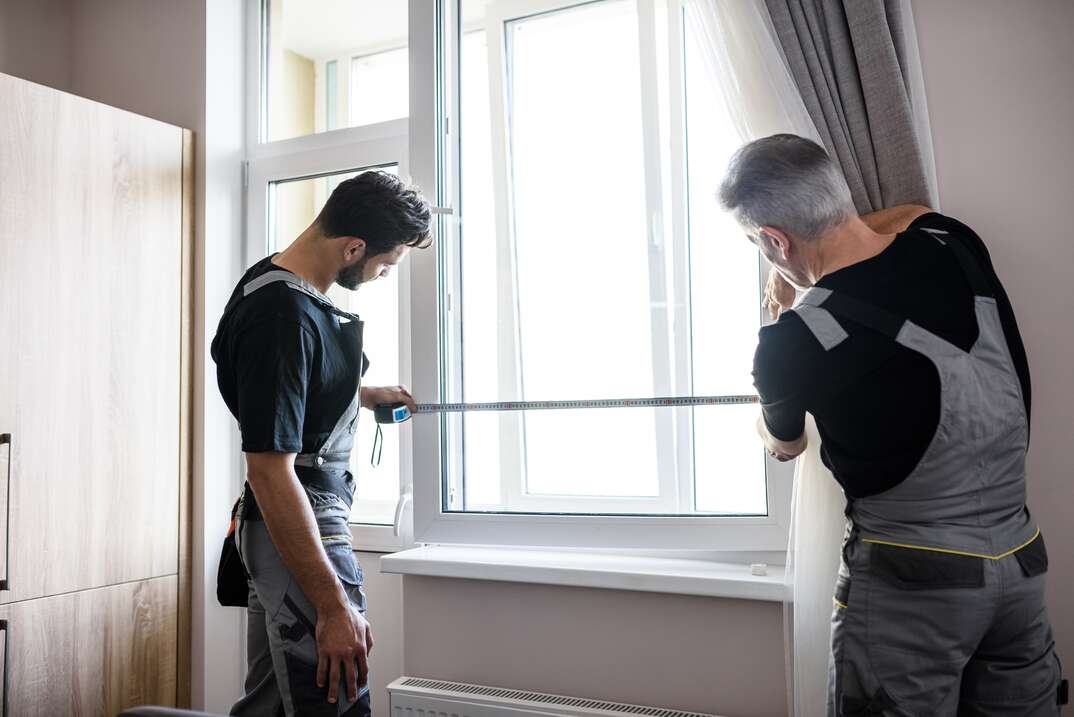How to Replace Your Windows

Installing or Replacing Windows at a Glance
- Tools & Materials: Caulk, drill, hammer, level, putty knife, utility knife, pry bar, sandpaper, waterproof shims
- Step 1: Measure and plan
- Step 2: Remove existing window
- Step 3: Prepare window frame
- Step 4: Dry-fit window
- Step 5: Install new window
- Step 6: Seal
If you're looking for a high-impact home improvement project, window replacement is near the top of the list. Installing new windows can transform the look of your home and make it more energy efficient. Tackling a DIY window replacement or an installation project may seem intimidating, but all it takes is a little knowledge and preparation.
This May Also Interest You: How to Measure for Replacement Windows
As with any home project, it's important to take proper precautions to protect yourself. Wear safety glasses and gloves when you're handling glass or wood. If your home was built before 1978, you should also consult a certified professional to check for potentially hazardous lead paint.
Got all that? Good. Next, follow these steps to install your brand-new windows.
Step 1: Plan and Prepare
You've probably heard the old adage: Failing to plan is planning to fail. That is certainly true when it comes to a job like home window installation. Taking the time to plan out your project and prepare in advance will save you a lot of trouble later on.
To begin, consider what kind of windows you'll be installing. Windows meant for new construction are designed to be attached to a rough opening in the wall. Remodel windows, on the other hand, are generally made to fit within an existing finished frame. If your existing frame is damaged, you might first need to repair or replace it.
To make sure your new window is sized correctly, you will need to take precise measurements of your existing frame. Start by measuring the inside width of the frame from jamb to jamb, repeating the process for the top, middle and bottom sections. Use the same process to measure the frame's height in the middle and along both edges. When you're done, use the smallest height and width measurements for the dimensions of the new window.
Things You’ll Need
Finally, assemble all the tools and materials you may need to complete the job. These include:
- Caulk
- Cordless drill
- Hammer
- Level
- Putty knife
- Utility knife
- Small pry bar
- Sandpaper
- Waterproof shims
Step 2: Take Out the Existing Window
To take out your current window, you first need to remove any interior stops and parting stops that are holding it in place. Simply insert a putty knife into the seam between the stop and the frame and apply pressure with a small pry bar. If the seam has been painted over, you may need to start by scoring it with a utility knife.
If you plan to reuse your existing trim pieces, remove them as carefully as you can. In some cases, however, it may not be possible to pry them loose without causing damage. If the stops won't budge at all, then they're likely to be embedded within the frame. If that's the case, it may be necessary to cut them off using an oscillating saw.
Be sure to hold the sashes in place as you work to prevent them from falling out accidentally. Once the inner stops are removed, the sashes should pop out easily. If your existing window has any cracks or other signs of damage, cover them with strips of painter's tape before you begin. This will help keep the glass together and prevent any shards from coming loose.
Next, you will need to remove the existing balancing system. If your window uses sash weights, cut the cords and let the weights fall. If the window uses sash springs, cut away the plastic covers and remove any screws holding the springs in place. These springs are under tension, so be sure to handle them carefully as you remove them.
Step 3: Prepare Your Window Frame
Once all the existing hardware has been removed, take a moment to inspect your window frame and exterior stops. If the stops show signs of damage or decay, consider removing and replacing them before you continue. If your old window used sash weights, then it's also a good idea to insulate the pockets. Even with new, high-efficiency windows, poor window insulation can let a lot of air flow through.
To make the new window installation as smooth as possible, scrape off the loose paint from the window frame and patch any holes or cracks with putty. Sand the repaired surface smooth, apply primer and paint it to match your desired aesthetic. This preparation takes extra work, but it's worth it to ensure your new window holds up for years to come.
More Related Articles:
- How to Remove a Window
- How to Clean Windows to Get That Streak-Free Shine
- Save Yourself Some Pane With Our DIY Window Repair Guide
- How to Install or Replace a Window Well
- How to Insulate Windows
Step 4: Dry-Fit Your New Window
After preparing your frame, it’s almost time to install the new window. First, however, you'll need to make sure everything fits properly. The last thing you need while in the middle of installation is to find out your window isn't the right size.
Dry-fitting a window simply means placing it into the frame without actually installing it. Since windows can sometimes be heavy or bulky, it is best to have another person help you place and hold it. Carefully insert the new window and center it inside the frame, making sure it sits flush against the exterior stops.
After the window is placed, check to make sure it's plumb and level. You should have only a small gap between the window and the frame. If necessary, you can use shims to make small adjustments and ensure the perfect fit. Always place the shims in line with the predrilled holes in the window frame.

Step 5: Install the New Window
Once you're confident that your window fits as intended, you can insert it for real. First, use a caulk gun to apply a bead of caulk along the inner face of the exterior stop molding. For best results, hold the caulk gun at a 45-degree angle and apply steady pressure to the trigger as you pull the gun toward you.
When putting in a window, start by resting it on the sill and then tipping it up into position. Applying even pressure, push the window firmly against the exterior stops to help create a stronger seal. Loosely fasten the window to the frame by inserting screws in the top-right and bottom-left corners, driving them in only far enough to allow the window to operate.
With the window in place, check the fit again to ensure it's level. To verify that the window is square, measure diagonally from corner to corner in both directions. The distance should be exactly the same. If there are still issues with the fit, use shims to make any necessary adjustments.
It's often tempting to settle for less than a perfect fit, but this can eventually lead to serious problems. Even very minor misalignments can grow over time as the window frame shifts and settles. Ultimately, this can impair the smooth operation of your window and potentially create openings where air or water can penetrate.
Once the window is aligned properly, you'll then want to check the sashes to see if they move freely and lock as intended. Finally, fix the window in place using the predrilled holes. Use a utility knife to carefully trim the shims and make them flush.
Step 6: Finish the Installation
After your new window is installed, you’ll need to make sure it looks and performs at its best. From the outside, look for any gaps between the window frame and the casing around it. For small gaps, use a thin bead of caulk to seal out the elements. If there are larger gaps, you can fill them with lengths of foam backer rod weatherstripping.
Now, reinstall the trim. If you were able to remove the stops without damaging them, they can be reused without issue. Fasten the pieces to the frame using small finishing nails. To avoid causing damage with the hammer, use a nail set to finish driving each nail. If necessary, you can use a small amount of putty to fix any resulting holes.
For new vinyl windows, fill the gap underneath the sill with loosely packed fiberglass insulation. To cover the gap, measure its height and width and cut a piece of vinyl filler strip using a utility knife. In some cases, you may also need to use a pair of snips. Line up the strip of filler carefully and fix it firmly into place.
Apply a layer of latex caulk to seal the seams along the interior trim pieces. After everything is sealed, allow the caulk to dry fully. Finally, you can prime and paint or stain your new window to match whatever look you prefer.


